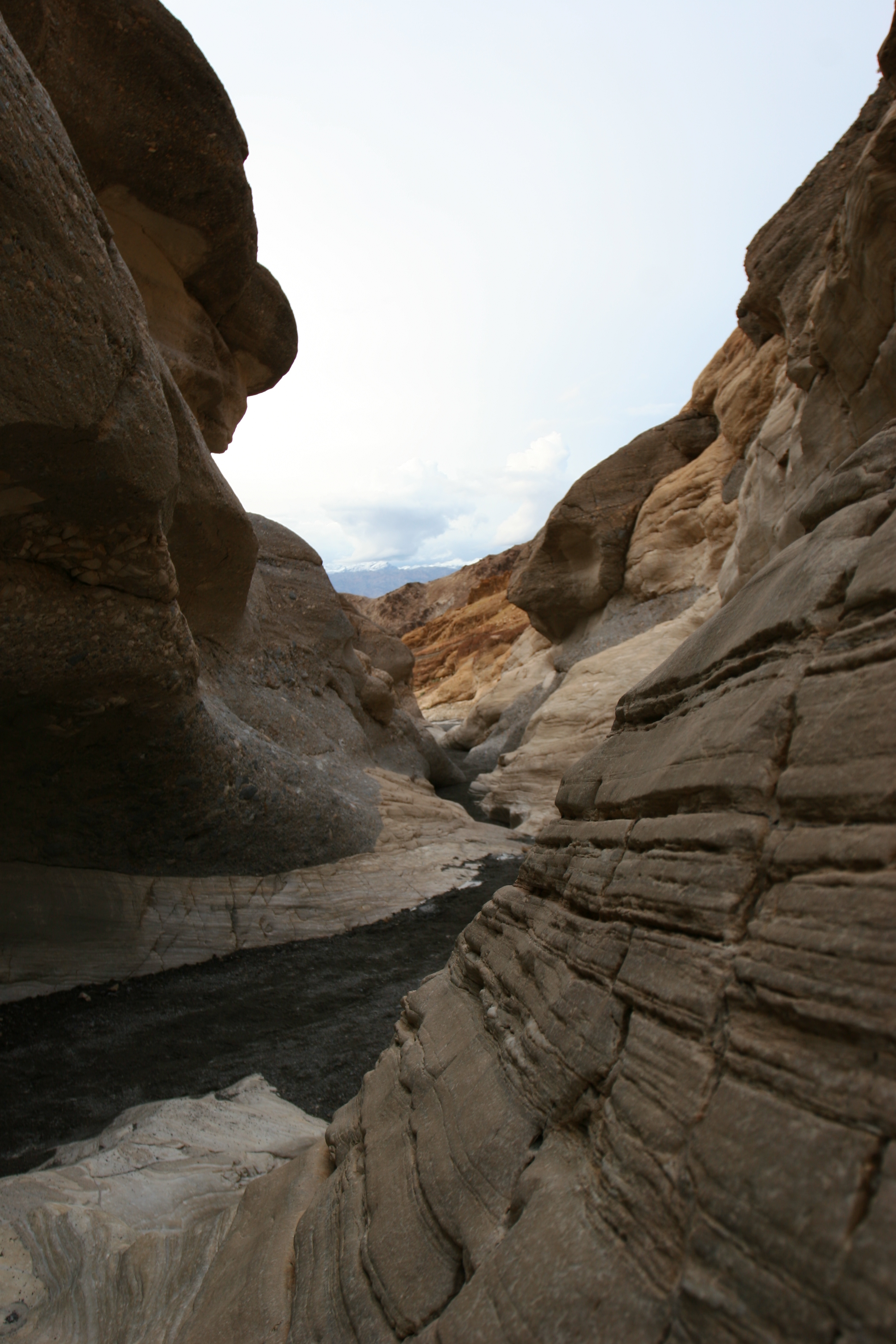Mosaic Canyon
Do you like rocks? I like rocks. I’m constantly staring at rocks; picking up rocks, and trying to analyze rocks. Part of my interest in rocks is based on the fact that I’m wondering, “Is this safe to climb? Will this hold my weight? Can I traverse it?” and part of my interest lies within a much simpler explanation: the rule of cool (“ROC”). Rocks, in my opinion, are cool. Think about it for a minute: rocks are the very bones of the planet; forged in the molten interior before being slowly exposed on the surface. Even if you disagree with my analogy above, and say that rocks are more like the soul of the planet, dark and inscrutable, or some other metaphor, rocks are cool because they are time capsules. Any geologic feature, large or small that one gazes upon probably stood for millions of years, and during that time, was probably altered by heat, wind, water, ice, or platetechtonics. If nothing else, the long view of earth’s history gives you pause – that rock there that you’re sitting on? Probably stepped upon by dinosaurs; and it’ll probably be present long after you’re gone. Then again, if you don’t want to think about such big picture things, it’s easiest to say what I said above: rocks are cool.
Death Valley is a great place for rock aficionados, and one of the most unique places in the park to see the forces of nature – and geology at work is in Mosaic Canyon. In the canyon you can expect to see the following: “…Mosaic Breccia. Breccia is the Italian word meaning "fragments". This formation is composed of angular fragments of many different kinds of parent rock, and it can be seen on the floor of the canyon just south of the parking area. The most common rock formation in the canyon is the Noonday Dolomite. This limestone is rich in magnesium and formed 750 to 900 million years ago when the area was part of the Pacific Ocean. This sedimentary material was later buried to great depths by younger materials and was subjected to pressures and temperatures exceeding 1000 degrees Fahrenheit. As a result, much of the limestone was altered, or metamorphosed, into marble. Subsequent uplift and erosion have since re-exposed these metamorphic rocks.”
Directions: Mosaic Canyon is located .25 (1/4) miles West from Stovepipe Wells Village. From the park road, follow the well-signed and well-laid out gravel road two miles to the parking area. From the parking area, the trailhead is readily apparent. Do note that this is indeed one of the most popular hikes within the park, and during all portions of the year, you can and likely will see people on this hike. However, this is not a sure thing: the last two times I have headed up Mosaic Canyon, once in April, and once in June, there were minimal (~5 people) at the trailhead. Like most things in life, timing on the Mosaic Canyon trail is everything. I personally do not feel that the area is busy beyond belief, but it does have the potential to become so, depending on how busy the park is at the time of your visit. The best – and most well known features of the trail are within the first quarter mile, or as other people describe it, “lower Mosaic Canyon”.
These portions of the hike feature smooth granite sculpted walls, and very flat terrain. This is indeed the area, should the area be busy, where most of the other park visitors will be concentrated. The trail does continue on past this point, into what is now called, “Upper Mosaic Canyon” for another two (2) miles to a now dry waterfall (although it does feature runoff after storms), which unless you have the skills and or equipment, is impassable to climb. If you want to only hike the lower section of the trail, you are looking at a very easy hike of a half mile (.5) roundtrip; and if you are looking at a walking all of the way to the dry waterfall, you’re looking at an easy, mostly flat roundtrip distance of four (4) miles.
Tips: Looking to beat the crowds? I guarantee that you will should you walk more than .25 (1/4) miles. If you’re the type of person that hates crowds, you’re probably also the type of person who can walk a quarter mile easily. After a quarter mile, the canyon opens up, and there’s great views along the way. In fact, depending on your perspective, these views may even be better than those in the initial section. Additionally, there are many offshoots from Mosaic Canyon that can and should be explored from this point; but, if you are going to do that, be sure that you do possess a map, compass, and or GPS device. It can also become quite hot in Mosaic Canyon, so do bring plenty of water. Also, as the NPS site says, do NOT take rocks from this site, as it is indeed protected for future generations. So look, touch, but do not take – leave no trace!
























